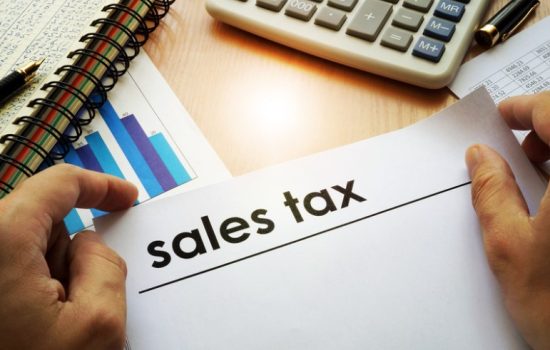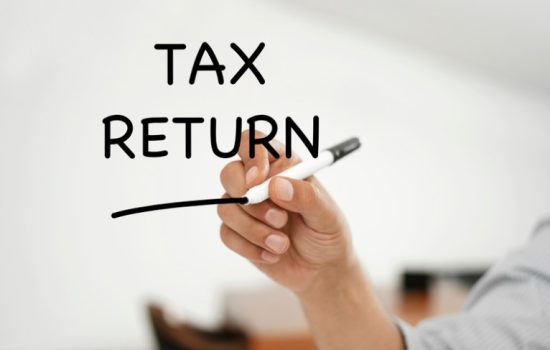Welcome to our ultimate guide on HST in Ontario! Whether you’re a business owner navigating the tax landscape or an individual trying to understand how it affects your finances, this comprehensive article will provide all the information you need. From understanding the HST rate and how it works to know what items are exempt and the penalties for non-compliance, we’ve got you covered. So buckle up and get ready for a deep dive into everything HST-related in Ontario!
What is the HST in Ontario?

The HST rate in Ontario is an important factor to consider when making purchases. It currently stands at 13%, which means that for every $100 you spend on goods or services subject to the HST, you’ll be paying $13 in tax.
This rate applies to a wide range of products and services across the province, including everything from clothing and electronics to dining out and professional services. Whether you’re buying groceries, getting your car repaired, or booking a hotel room, the HST will be applied accordingly.
It’s worth noting that not all items are subject to the full 13% HST rate. Some essentials like basic groceries, prescription drugs, children’s clothing, medical devices, residential electricity, heating and water are exempt from this tax.
Understanding the HST rate is crucial for both consumers and business owners alike as it directly impacts their budgets and financial planning. By being aware of how much tax will be added to their purchases upfront, individuals can make informed decisions about where they choose to spend their money.
How Does the HST Work in Ontario?
Businesses that operate in Ontario are required to register for the Harmonized Sales Tax (HST). This means that if you sell goods or provide services within the province, you must collect HST from your customers. The HST rate in Ontario is currently 13%.
Once businesses collect the HST from their customers, they must remit it to the government on a monthly or quarterly basis. This involves reporting and paying the amount of HST collected during a specific period.
However, businesses can also claim a rebate on some of the HST they pay on inputs such as materials and supplies. This helps offset some of the taxes paid when purchasing items necessary for business operations.
On the other hand, individuals who make purchases eligible for an HST rebate can also receive money back. For example, certain medical expenses or new housing may qualify for an HST rebate.
Understanding how the HST works is important for both businesses and consumers alike. It ensures compliance with tax regulations while allowing individuals to take advantage of potential rebates available to them. By accurately collecting and remitting taxes, businesses contribute to funding essential public services provided by governments at all levels across Ontario
Who Pays HST?

When it comes to who pays the HST in Ontario, the answer is simple: consumers. Yes, that’s right! It’s us, the everyday shoppers and service seekers, who bear the burden of this tax. Whenever we purchase goods or services that are subject to the HST, we can expect to see that extra 13% added to our bill.
But let’s not forget about businesses. They play a crucial role in collecting and remitting the HST on behalf of the government. As responsible entities engaged in selling goods or providing services, businesses are required to register for HST and ensure they collect it from their customers. This money is then sent off to be remitted to the government either monthly or quarterly.
So why do businesses have this responsibility? Well, it helps streamline the process and ensures consistent collection of taxes across various transactions. By placing this obligation on businesses rather than individual consumers, it creates a more efficient system for managing tax revenue.
In summary (without concluding), remember that when you’re out shopping or availing services in Ontario, keep in mind that you’ll likely be paying an additional 13% as part of your total bill due to HST. And while businesses handle the collection and remittance process behind the scenes (as required by law), ultimately it’s us consumers who foot the bill for these taxes at checkout!
What Items Are Exempt from HST in Ontario?
In Ontario, several items are exempt from the HST. Let’s take a closer look at what these items are and how they can save you some money.
First up, we have basic groceries. That means your everyday essentials like fruits, vegetables, bread, milk, and eggs won’t be subject to the HST. So when you’re stocking up on food for your family, rest assured that you won’t be paying any extra tax.
Next on the list is prescription drugs. When it comes to taking care of our health, it’s good to know that we don’t have to worry about paying taxes on necessary medications.
For parents out there, children’s clothing is also exempt from the HST. From adorable onesies to cozy sweaters, you can dress your little ones without any added tax burden.
Medical devices such as walkers or hearing aids are also exempt from the HST in Ontario. This exemption helps ensure accessibility for those who rely on these essential devices for their well-being.
When it comes to household expenses, residential electricity is another item exempt from the HST. Keeping our homes powered shouldn’t come with an additional tax cost.
Similarly, residential heating doesn’t attract any additional taxation either. Whether you use gas or electric heating systems in your home during those cold Canadian winters – no worries about extra taxes here!
Last but certainly not least – residential water is also free from the grasp of HST in Ontario! We all need clean water for drinking and various other daily activities so this exemption makes a difference.
Knowing which items are exempt from the HST can help us make informed decisions while shopping and managing our finances effectively in Ontario.
What are the Penalties for not Paying HST?
When it comes to taxes, it’s crucial to stay on top of your game. In Ontario, the HST is no exception. Failing to pay or collect the HST can result in some serious consequences for both businesses and individuals.
For businesses, not remitting the HST they have collected from their customers can lead to fines, interest charges, and penalties. These financial repercussions can quickly add up and take a toll on a company’s bottom line.
Individuals who neglect to report and pay the HST on their taxes are also at risk of facing significant penalties. The government takes tax evasion seriously, and those who fail to comply may find themselves dealing with fines, interest charges, and potential legal issues.
It’s essential for everyone involved – whether you’re running a business or filing personal taxes – to understand the implications of not paying the HST. Ignoring this responsibility could have long-lasting effects that go beyond just monetary losses.
Don’t let yourself fall into this trap; make sure you stay informed about your obligations when it comes to paying the HST in Ontario!
How do I File an HST Return?

Filing an HST return may seem like a daunting task, but it’s not as complicated as you might think. Whether you’re a business owner or an individual, the process is relatively straightforward.
If you’re a registered business that collects HST, you’ll need to file your return on either a monthly or quarterly basis. The choice is yours, depending on what works best for your business. And the good news is that filing can be done online or by mail – whichever method suits you better.
For individuals who have claimed the HST rebate on their taxes, filing an HST return may also be necessary. Similar to businesses, individuals have the option to file online or by mail.
Whichever category you fall into – business owner or individual – it’s important to stay organized and keep track of all relevant receipts and documentation. This will make the filing process much smoother and ensure accurate reporting.
Remember, when it comes to filing an HST return in Ontario, there are options available to suit different preferences and needs. So take advantage of technology if that’s your preference or go old school with traditional mail-in forms if that works better for you!
Conclusion
Understanding the HST (Harmonized Sales Tax) in Ontario is essential for both businesses and individuals. With a rate of 13%, the HST adds cost to goods and services, impacting our daily lives. Businesses must register for HST, collect it from customers, and remit it to the government regularly.
Consumers are responsible for paying the HST when purchasing taxable items. However, certain items like basic groceries, prescription drugs, children’s clothing, medical devices, residential electricity, heating, and water are exempt from this tax.
It is crucial to comply with HST regulations as penalties for non-payment can be severe. Fines, interest charges, and penalties may apply to businesses that fail to collect or remit the appropriate amount of HST. Individuals who do not report or pay their portion of the tax can also face similar consequences.
Filing an HST return is necessary for registered businesses on a monthly or quarterly basis. This can be done conveniently online or through traditional mail processes. Individuals may also need to file an HST return if they have claimed an eligible rebate on their taxes.
FAQs on – The Ultimate Guide to Understanding HST in Ontario

1. Is GST and HST the same?
No, GST and HST are not the same. GST stands for goods and services tax, while HST stands for harmonized sales tax. GST is a federal tax, while HST is a combination of the GST and a provincial sales tax (PST).
In Ontario, the HST rate is 13%. This is the combined rate of the 5% GST and the 8% PST. In other provinces that have HST, the rate may be different. For example, in Nova Scotia, the HST rate is 15%.
2. What is HST charged on Canada?
HST is charged on most goods and services sold in Canada. However, some items are exempt from HST, such as basic groceries, prescription drugs, and children’s clothing. Some items are zero-rated for HST, which means that the tax rate is 0%. These items typically include food prepared for immediate consumption, such as meals at restaurants, and hotel accommodations.
3. Is GST the same as HST in Ontario?
Yes, GST and HST are the same in Ontario. The HST rate in Ontario is 13%, which is the combined rate of the 5% GST and the 8% PST.
4. Do you pay both GST and HST?
No, you do not pay both GST and HST. If you are in a province that has HST, you only pay the HST. The HST rate is the combined rate of the GST and the PST.
For example, if you are in Ontario, you will pay 13% HST on most goods and services that you purchase. This is the same as paying 5% GST and 8% PST.










